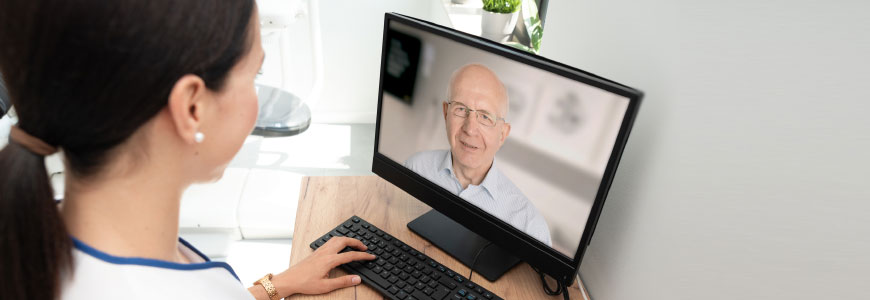Telemedicine has many promising benefits, but physicians may not be receiving the proper guidance on establishing an effective telehealth program. In fact, telehealth training is not yet a standard part of most medical school curricula.
In many cases, telehealth visits aren’t intended to replace all in-person examinations, but they can be used to supplement a patient’s care plan, especially for patients who find it challenging to access care. Telehealth visits are also particularly useful as follow-up visits. Thus, physicians should ensure they are well versed in an appropriate “web-side” manner.
Tina Gustin, DNP, a clinical manager of the telehealth program at Children’s Hospital of The King’s Daughters in Virginia and director for the Telehealth Training, Education, and Research Center at Old Dominion University, educates medical students in proper telehealth etiquette. “Everyone’s trained to do an interview in person. They know how to have a bedside manner, they know how to do motivational interviewing—it’s ingrained in their practice,” Gustin explains. “But that doesn’t flip over to telehealth as intuitively and as easily as you think it should.” Learning how to effectively express empathy through a screen is a crucial component of a successful telehealth visit, she adds.
Gustin urges providers to seek out telehealth training, which is available at federally funded centers across the country, including the Mid-Atlantic Telehealth Resource Center. Courses include strategies for properly communicating with patients via a digital interface and information on common mistakes to avoid, such as chewing gum or eating during a telehealth session.
Many major medical systems are investing in telehealth services and providing equipment, training, and support for their providers. But physicians with smaller practices (and budgets) can still offer high-quality telehealth services—all they need is a smartphone, computer, or tablet with a secure, Health Insurance Portability and Accountability Act–compliant platform. “I tell students that you don’t need to spend a lot of money,” Gustin says.
Alex Cho, MD, MBA, the clinical lead for Duke Health’s Telehealth Office, says that telehealth providers find it helpful to explicitly set aside time to conduct virtual visits. “By packing them together, that also adds to the efficiency,” Cho says. “The provider is in the right setting and stays in the right setting, without switching back and forth” between different tasks, he explains.
Overall, a major goal of Duke’s telehealth initiative is to “increase access, making care more convenient for patients as well as satisfying for providers,” Cho says. Because of the success of its current telehealth offerings, Duke will be expanding its telehealth programs later this year with the launch of a 24/7 direct-to-consumer digital platform that will virtually connect patients with online urgent care providers and, eventually, other services.
Check out recent practice management articles:
Incorporating Data to Coordinate Care and Improve Children’s Health
